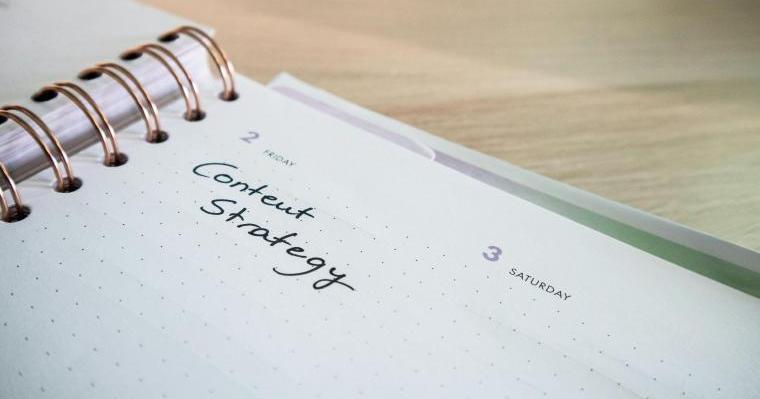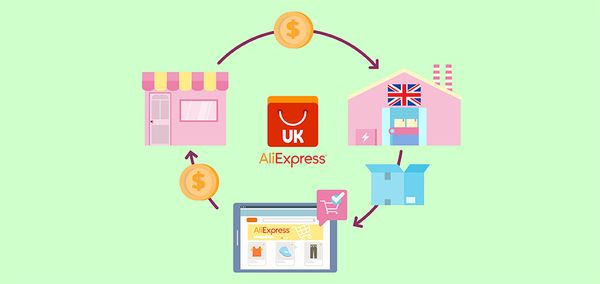What Is Webinar Marketing: An Ultimate Guide 2025

Businesses are constantly searching for ways to build real, human connections with their audiences. That’s where webinars come in. Far more than just virtual presentations, webinars have become powerful tools for engaging audiences, showcasing expertise, and driving high-quality leads.
Whether you’re a coach, SaaS founder, agency, or product-based business, this guide will walk you through what webinar marketing is, why it works, how to do it well, and how to create a campaign that delivers real results.
What Is Webinar Marketing
Webinar marketing is a strategy that uses online seminars (webinars) to promote your brand, build trust with your audience, and ultimately convert attendees into customers or leads.
Unlike traditional marketing methods that talk at your audience, webinars let you talk with them. They combine live (or pre-recorded) presentations with interactive elements like Q&A sessions, polls, and chat boxes, making them one of the most engaging forms of digital communication.
Webinars can serve different goals depending on your business model. Some companies use them to launch products. Others host them to build brand awareness, train customers, or nurture leads through their funnel.

|
Place Orders to AliExpress In Seconds DSers Bulk Order - Place 100s of orders to AliExpress in a few seconds with a just few clicks |
The beauty of webinars lies in their versatility: you can go deep on a topic, tell your brand story, and provide real-time value, often in under an hour.
Benefits of Webinar Marketing
Webinar marketing isn’t just a buzzword. It’s a proven strategy with real, measurable benefits, especially in a digital-first world where attention spans are short and connection is key.
1. Build Authority and Trust
People do business with brands they trust. Hosting a webinar establishes you as a subject matter expert, demonstrating your expertise and willingness to share your knowledge.
When you deliver valuable, actionable content, your audience starts to see you not just as a business but as a helpful, reliable partner.
2. Engage Your Audience in Real Time
Webinars offer the rare opportunity to speak directly to your potential customers. Attendees can ask questions, participate in polls, and share feedback, all in the moment. This kind of real-time engagement helps create a more personal and memorable experience.
3. Generate Qualified Leads
One of the biggest advantages of webinars is that they attract people who are already interested in what you have to offer. Unlike social media likes or casual blog readers, webinar registrants have taken action. They’ve signed up. They’ve shown up. Often, they’re willing to take the next step.
4. Provide Repurposable Content
Your live webinar can be recorded and reused in countless ways: edited into video snippets for social media, turned into blog posts or eBooks, or used as part of your lead-nurturing sequence. One webinar can fuel your content marketing for weeks.

5. Offer Measurable ROI
From registration rates to engagement levels, webinar platforms give you clear data. You can monitor who attended, how long they stayed, what they engaged with, and the questions they asked. This information allows you to improve your messaging and enhance future campaigns.

|
Adapt Your Product Prices Automatically DSers Automatic Pricing - Pre-set Pricing Rule to mark-up your product price automatically |
Webinar Marketing Best Practices in Action
Webinars aren’t just about logging in and delivering a presentation. Here are the most important best practices to guide your webinar marketing from concept to conversion, each one backed by real-world application.
Understand Who You're Speaking To
Before writing a single slide, take a step back and define your audience. Who are they? What do they care about? What are their daily challenges, goals, or frustrations? Are they tech-savvy professionals or first-time entrepreneurs? The more specific you are, the more relevant and impactful your webinar will be.
Let’s say you’re targeting small business owners in the health and wellness space. A webinar titled “Marketing Tips” may be too vague. But “How Wellness Brands Can Double Their Client Bookings with Local SEO” speaks directly to a pain point and promises a specific outcome.
Take time to research your audience. You could use surveys, social media polls, and insights from your email list. You can also gather information from customer support tickets and sales conversations. Once you know who you’re serving, you’ll be able to speak their language and offer solutions that land.
Choose a Topic and Format That Deliver Value
Great webinars don’t aim to impress, they aim to help. The topic should solve a problem, answer a burning question, or walk your audience toward a tangible result.
There are many formats you can use:
- Educational webinar: Teach your audience a skill or method they can apply immediately.
- Live product demo: Show how your software or service works in real time.
- Case study session: Share how a client achieved success using your offering.
- Panel discussion: Bring together industry experts to share diverse perspectives.
- AMA (Ask Me Anything) – Let your audience drive the conversation with live questions.
Once you choose a format, organize it with intention. Hook them in the first five minutes. Keep each section focused and avoid information overload. And always wrap up with a clear next step.
Promote It Like a Launch, Not an Event
The biggest mistake many brands make is spending days crafting the webinar… but only an afternoon promoting it. You should approach your webinar promotion like a mini product launch, because, in a way, that’s what it is.
Start by building a dedicated landing page with a clear, benefit-driven headline, a bulleted list of what attendees will learn, speaker bios, and a strong call-to-action (CTA) to register.
Then map out a promotional calendar:
- 2–3 weeks before the event: Start promoting the webinar through email and social media. Share what it’s about, why it matters, and what viewers will gain.
- 1 week before: Send reminders and use urgency-based messaging (“Only 50 spots left” or “Registration closes in 48 hours”).
- Day before & day of: Send confirmation emails that include calendar links, joining instructions, and a sneak peek of what participants can expect.
Cross-promotion helps, too. Consider partnering with affiliates, influencers, or communities in your niche to share the webinar with their audiences.
Engage Your Audience During the Webinar
No one wants to sit through a 45-minute monologue. To keep your attendees engaged and encourage participation, it's essential to foster interaction.
Use tools like:
- Live polls: Ask attendees questions related to your topic to warm them up and gather insights.
- Chat box or Q&A: Encourage people to drop questions or comments as you go.
- On-screen prompts: Every 10–15 minutes, ask viewers to do something: reflect, vote, type a response, or take a screenshot.
- Storytelling and case examples: Real-life stories bring content to life and create emotional resonance.
A simple engagement trick? Acknowledge attendees by name when answering questions. This builds a connection and gives people a reason to stay engaged until the end.
How to Create a Successful Webinar Campaign
Now that you understand what makes a webinar work, let’s put it all together into a repeatable, results-driven campaign. Below is a step-by-step approach to help you plan, launch, and optimize a high-performing webinar from start to finish.
Step 1: Set a Clear Goal
Before you touch the slides or create a landing page, define what success looks like. Are you looking to:
- Generate new leads?
- Move prospects down the sales funnel?
- Introduce a new product?
- Educate and nurture your existing audience?
Be specific. A goal like “Get 100 qualified leads for our software demo” is more actionable than “Grow brand awareness.” Your goal will determine your topic, your CTA, your follow-up strategy, and even how you promote the event.
Step 2: Select a Focused Topic
Your topic should align tightly with your goal and solve a real need for your target audience. Think about the transformation someone will walk away with.
- Weak topic: How to Be Better at Marketing
- Strong topic: 3 Simple Marketing Funnels That Generated $25K in 30 Days
Use specific numbers, timeframes, or proven frameworks to build curiosity and credibility. Make it sound irresistible.
Step 3: Choose the Right Platform
Your webinar platform should support your campaign goals. Are you more focused on audience size, interactivity, or post-event analytics?
Popular options include:
- Zoom – Easy to use and dependable for live sessions and Q&As.
- WebinarJam – Great for high-converting registration pages and automated follow-up.
- Demio – Offers strong branding features and audience interaction tools.
- Livestorm – Perfect for teams requiring comprehensive analytics and integrations.
Make sure your platform integrates with your CRM and email tools so you can easily manage signups, reminders, and follow-ups.
Step 4: Build Your Funnel Assets
Your webinar is part of a funnel. To make it successful, you’ll need:
- A registration page with persuasive copy, visuals, and a clear value proposition
- A confirmation page and thank-you message that sets expectations
- A reminder sequence leading up to the event (email + SMS if possible)
- A follow-up sequence that includes the replay, bonus offers, and CTAs
Every touchpoint should reinforce the value of the webinar and guide attendees toward the next action.
Step 5: Rehearse Your Presentation
Even if you know your content well, rehearse. Practice your timing. Anticipate tech hiccups. Test your webcam, slides, and mic.
A smooth delivery builds trust. If you’re hosting with a co-presenter or panel, do a full run-through to avoid surprises. And always have a backup plan: saved slides in PDF format that you can quickly convert using a PDF to Word tool if edits are needed on the fly, a second internet source (like a hotspot), and an assistant to handle chat questions or tech support.
Step 6: Host the Webinar with Confidence
Start strong. Greet attendees, outline what’s coming, and let them know you value their time. You could smile, speak clearly, and take pauses to invite questions.
Don’t be afraid to go off-script if the chat gets lively, just keep your core structure intact. And remember to repeat key points so they stick.
Wrap up by summarizing what they’ve learned, restating the offer, and giving a deadline to act. Then thank everyone warmly and let them know what’s coming next.
Step 7: Review, Optimize, and Repurpose
After the webinar, dig into the data. How many people registered? How many showed up? When did engagement drop off? What questions came up again and again?
Use that data to improve your next webinar. You can even send a short post-event survey asking attendees what they liked and what they’d change.
Then, look at how to repurpose the content:
- Clip short video snippets for social media
- Turn slides into a LinkedIn carousel
- Transform the transcript into a blog post
- Use the Q&A as a customer-facing FAQ
This helps you get more mileage from your hard work and keeps your brand in front of your audience long after the event ends.
Success with Webinar Marketing
The truth is, webinar marketing isn’t just about delivering information. It’s about creating a connection between you and your audience, your brand, and their goals.
When done well, webinars bring your message to life. They turn cold leads into warm conversations. They help people see your value, your expertise, and your authenticity. And they allow you to do all of that at scale.
As we move deeper into 2025, trust and engagement will matter more than ever. Webinar marketing gives you a platform to build both. Whether you’re just getting started or refining your approach, there’s never been a better time to embrace this strategy.











 Company
Company
 Why Choose DSers
Why Choose DSers
 Blog
Blog
 Help Center
Help Center




 Live Chat
Live Chat